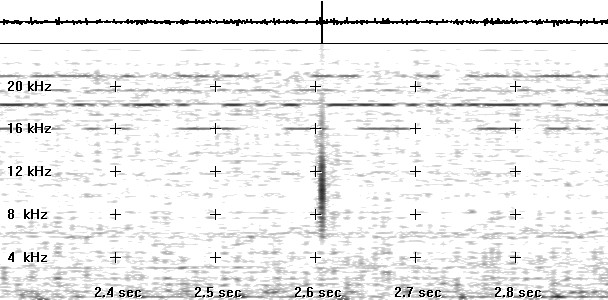 [A
typical Sferics, measured in Fürth]
[A
typical Sferics, measured in Fürth]
The first sferics were observed like whistlers, when line-techniks on the Zugspitze heards some knack into the lines in the 1889‘s. With the 1940‘s the relation between lighning and sferics were known by Eckersley (Eckersley,T.L.,Musical atmospheric disturbances,Phil.Mag.,49 ,p.1250,1925.) Eckersley supposed that the thunderstorms must be thousands of kilometers away from the observer.
Today it is known, that normal sferics ha an amplitude-maximum below 20 kHz, if they are produced by lightning. Sutch with a maximum at around 30 kHz seams to come from deep preasure areas and tornados-sferics has a maximum at around 55 MHz (!)
The transport-mechanism from the lightnings to the observer is real clear to day. The electromagnetic pulse travles through a cave between the ground and the D-Layer or E-Layer. This transportation is real good and the damping is given with 1 to 4 dB/1000 km.
A typical sferic is between 4 µS and some mS wide and has a maximum
amplitude of round 10 kHz. A normal sferic could be seen on a audiogram
on a vertical line running through the spectrum.